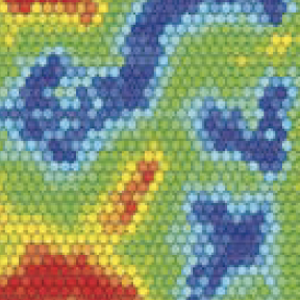Dynamics of agricultural land systems in western Mediterranean areas: a clustering approach based on the self-organizing map

Supplementary Material: 138
HTML: 99
All claims expressed in this article are solely those of the authors and do not necessarily represent those of their affiliated organizations, or those of the publisher, the editors and the reviewers. Any product that may be evaluated in this article or claim that may be made by its manufacturer is not guaranteed or endorsed by the publisher.
In the present study, we implemented an unsupervised learning procedure, a self-organizing map (SOM), for characterizing the main agricultural land systems (ALS) in western Mediterranean areas. Input data derived from national agricultural censuses of two periods (2000 and 2010) at the municipality level. The SOM allowed us to aggregate the items into clusters based on the proximity between the associated input variables. The main clusters were then mapped back to the geographical space and interpreted in terms of ASL typologies. The main ALS from the census 2000 included one permanent grassland system with extensive farming; two arable land systems, corresponding to winter and summer crops; and two permanent cropland systems, relatable to intensively cultivated or marginal areas. The ALS from the census 2010 included only one arable land system with a non-intensive use of irrigation; two permanent cropland systems similar to those found in 2000; one more extensive permanent grassland system; and a mixed system characterized by permanent grassland and arable land. In summary, the main trends emerging from the transitions between the two censuses periods were: i) a reduction in agricultural land use; ii) an increase in utilized agricultural and irrigated area; iii) a contraction in arable land and permanent grassland. Using a data-driven approach such as SOM allowed us to discover hidden patterns in the input census data. Therefore, the prevalent agricultural typologies characterising the ALS in the two analysed periods resulted to be shaped by the reality of the surveyed area solely, with regard to its agronomic assessment.
How to Cite

This work is licensed under a Creative Commons Attribution-NonCommercial 4.0 International License.
PAGEPress has chosen to apply the Creative Commons Attribution NonCommercial 4.0 International License (CC BY-NC 4.0) to all manuscripts to be published.

 https://doi.org/10.4081/ija.2023.2199
https://doi.org/10.4081/ija.2023.2199



